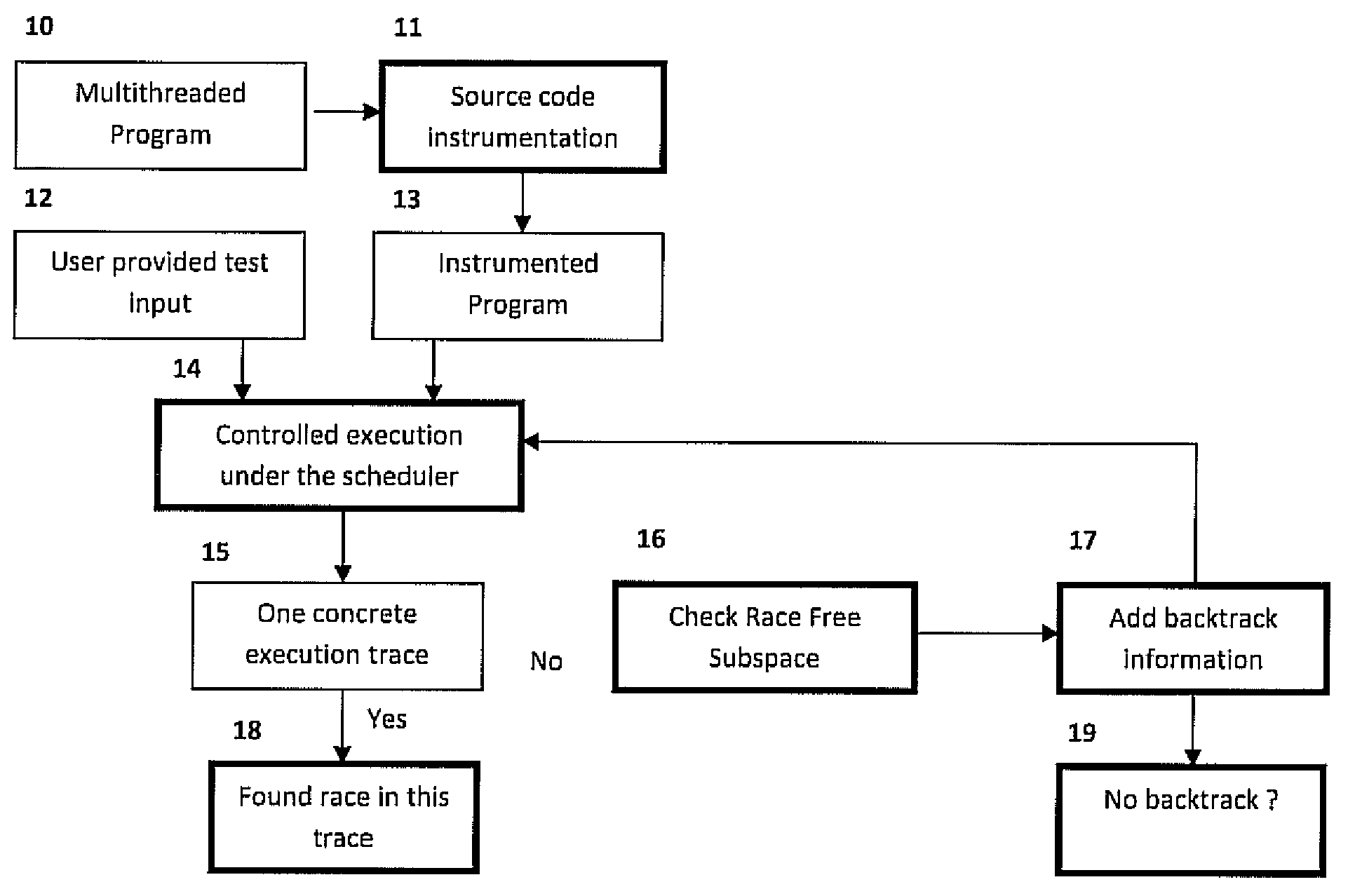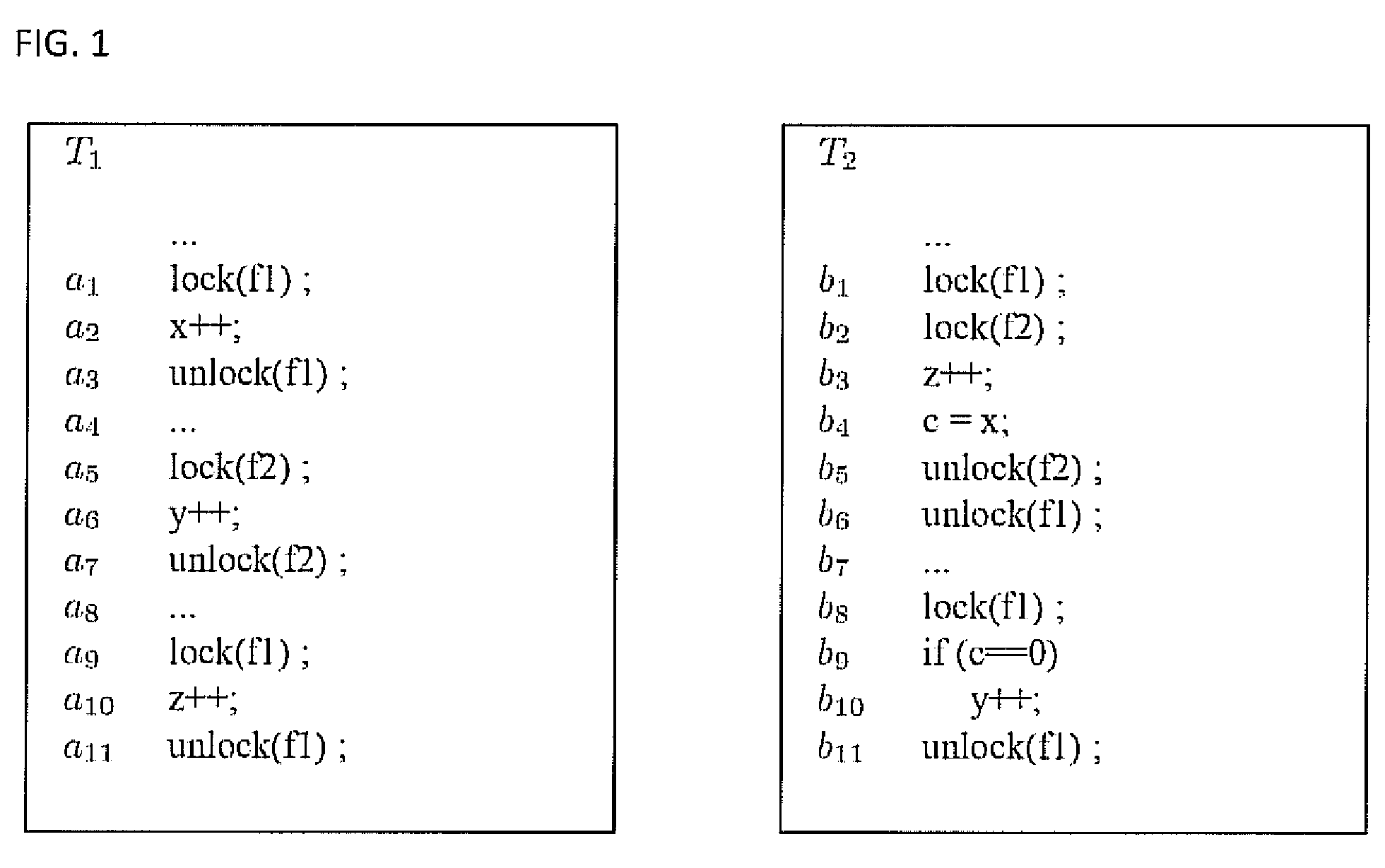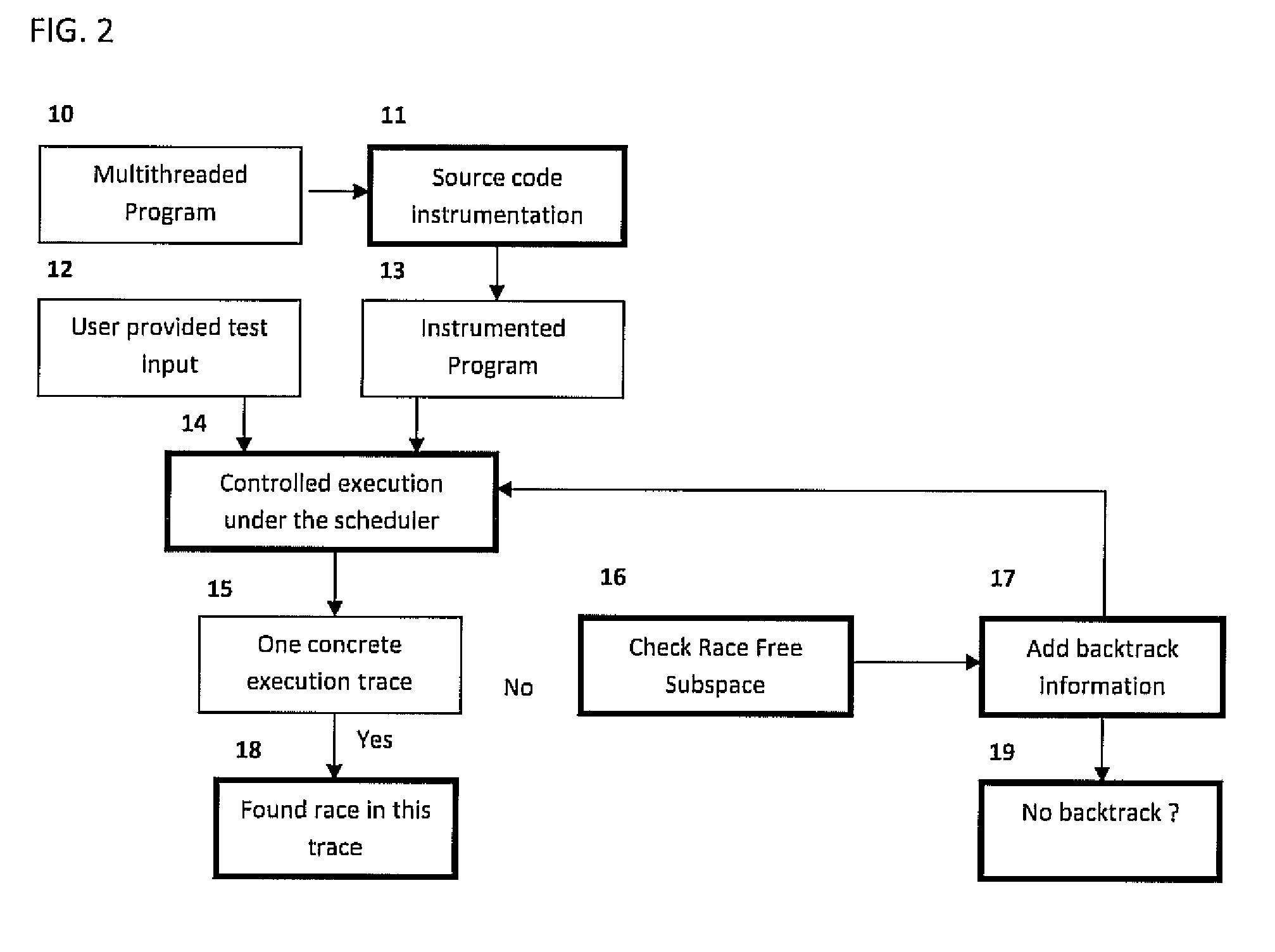Dynamic model checking with property driven pruning to detect race conditions
- Summary
- Abstract
- Description
- Claims
- Application Information
AI Technical Summary
Benefits of technology
Problems solved by technology
Method used
Image
Examples
Embodiment Construction
[0028]Dynamic model checking can directly check correctness properties in concurrent programs written in full-fledged programming languages, by systematically executing a program in its target environment. However, explicitly enumerating the individual execution traces is expensive, especially for exploring all possible interleavings (schedules) of multiple threads or processes.
[0029]The present principles rely on dynamic model checking (in particular, its concrete execution of the program in the target environment) to ensure that no bogus bug is reported, while using a conservative lock-set analysis on the existing execution trace to help prune the future search space. Embodiments include using a lockset analysis to check the possibility of getting a race condition in a certain search subspace during dynamic model checking. If the conservative lock-set analysis indicates that there is no way of getting a race condition in that search subspace, then we can safely prune away the subs...
PUM
 Login to View More
Login to View More Abstract
Description
Claims
Application Information
 Login to View More
Login to View More - R&D
- Intellectual Property
- Life Sciences
- Materials
- Tech Scout
- Unparalleled Data Quality
- Higher Quality Content
- 60% Fewer Hallucinations
Browse by: Latest US Patents, China's latest patents, Technical Efficacy Thesaurus, Application Domain, Technology Topic, Popular Technical Reports.
© 2025 PatSnap. All rights reserved.Legal|Privacy policy|Modern Slavery Act Transparency Statement|Sitemap|About US| Contact US: help@patsnap.com



